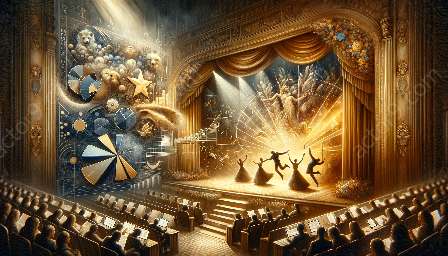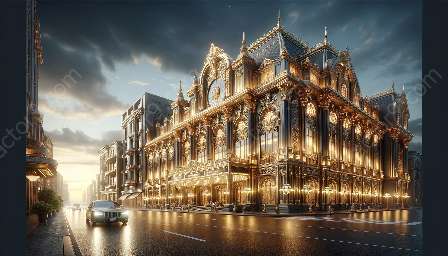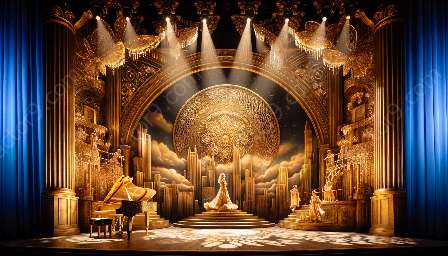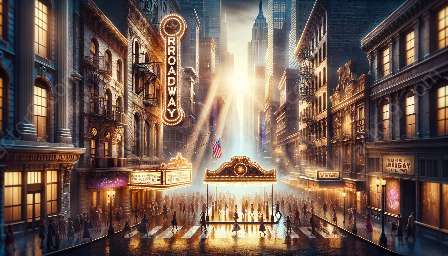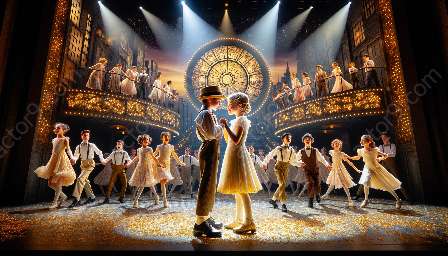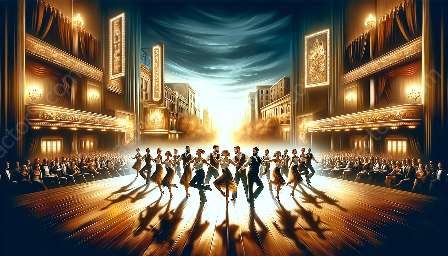Architectural elements play a crucial role in shaping the acoustics of Broadway theatres, significantly impacting the overall experience of musical theater performances.
Introduction to Broadway Theatres Architecture
Broadway theatres are known for their grandeur and historical significance. The architectural design of these iconic venues not only serves as a visual spectacle but also contributes to the auditory experience for both performers and audience members.
Acoustical Considerations in Broadway Theatres
When it comes to the design and construction of Broadway theatres, acoustics are a fundamental consideration. The layout, materials, and structural elements are carefully integrated to optimize sound quality, clarity, and amplification within the theatrical space.
Architects and acoustical engineers work in tandem to create an environment that allows for the projection of voices and music without compromising the integrity of the sound. From the shaping of the auditorium to the placement of reflective and absorptive surfaces, every detail is meticulously planned to enhance the acoustic experience.
Key Architectural Elements and Their Impact
1. Proscenium Arch: The proscenium arch, a defining feature of Broadway theatres, not only frames the stage but also serves as an acoustic enhancer. Its design helps to direct sound towards the audience, ensuring that the performance reaches every corner of the auditorium.
2. Balconies and Tiered Seating: The architectural arrangement of balconies and tiered seating not only provides optimal viewing angles but also contributes to sound distribution. The carefully planned structure helps in dispersing sound evenly throughout the theatre, creating a rich auditory experience regardless of the seating location.
3. Materials and Surfaces: The selection of materials and surfaces within the theatre, including the use of acoustic panels, curtains, and wall coverings, directly impacts sound reflection and absorption. These elements are strategically placed to minimize echoes and reverberations, resulting in a balanced and immersive acoustic environment.
Case Studies of Iconic Broadway Theatres
1. The Gershwin Theatre: As one of the largest Broadway theatres, the Gershwin Theatre incorporates architectural features that contribute to its exceptional acoustics. From its expansive auditorium to the innovative placement of sound-reflective surfaces, the design enhances the auditory experience for audiences enjoying musical extravaganzas.
2. The Richard Rodgers Theatre: This historic theatre, renowned for hosting legendary musicals, showcases architectural elements that have stood the test of time in optimizing acoustics. The careful balance of decorative features and acoustical considerations creates an enchanting sonic atmosphere for the audience.
The Future of Acoustics in Broadway Theatres
As technology and architectural innovation continue to evolve, the future of acoustics in Broadway theatres holds exciting possibilities. Advancements in acoustic design, including the integration of digital sound processing and adaptive acoustics, are poised to further elevate the auditory experience, ensuring that every musical note and spoken word resonates with clarity and impact.
Conclusion
The interplay of architectural elements and acoustics in Broadway theatres is a testament to the meticulous craftsmanship that underpins the world of musical theater. From the grand proscenium arch to the strategic use of materials, each aspect of the architectural design is intricately woven into the fabric of the acoustic landscape, enriching the experience for performers and audiences alike.










